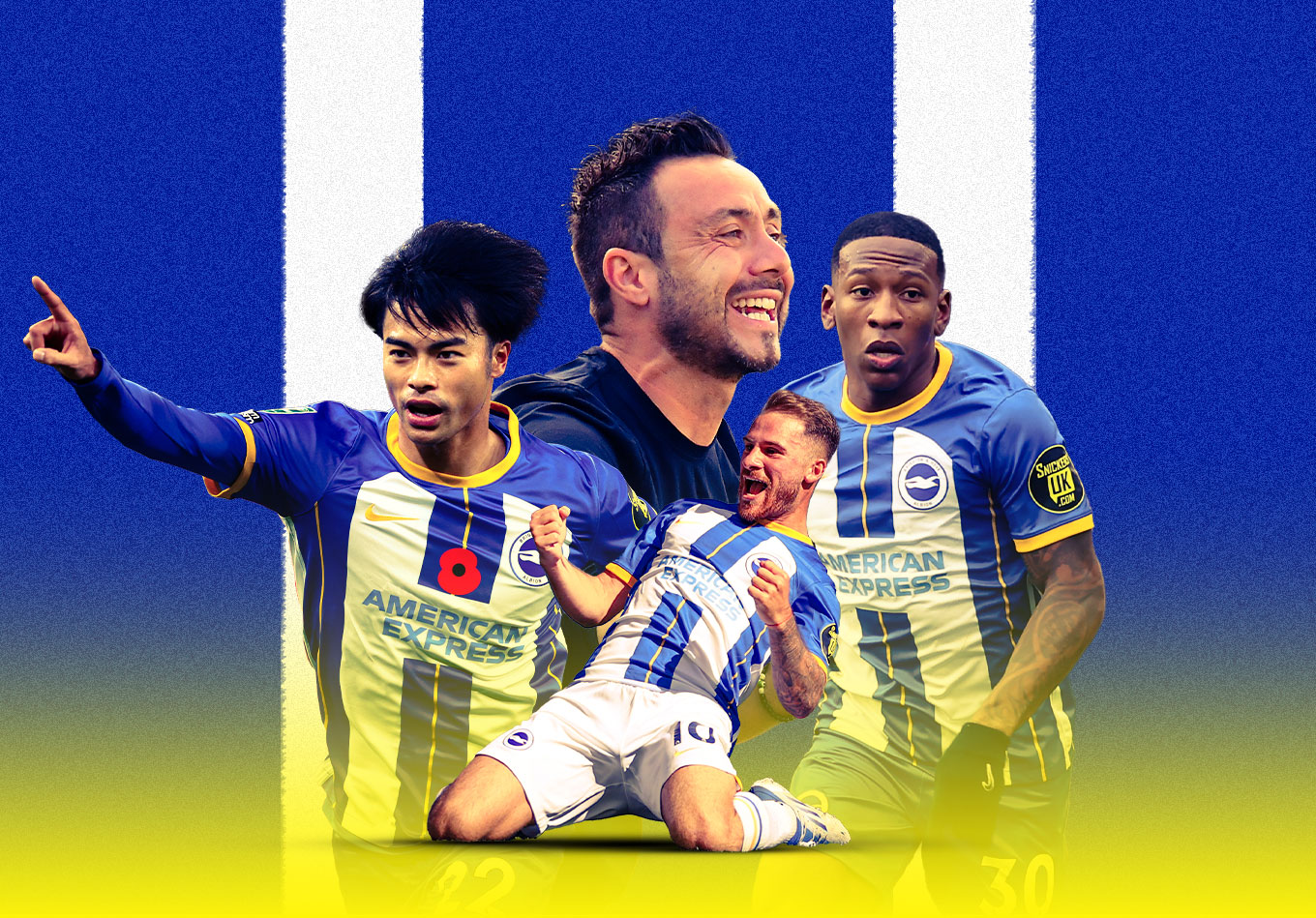Brighton sold Neal Maupay, Marc Cucurella and Yves Bissouma in the summer. Enock Mwpeu was forced to retire in October. They lost Graham Potter and his backroom staff in September and have since seen Paul Winstanley, their Head of Recruitment, depart to join Chelsea.
For most teams, this would be enough to write off the campaign as a transitional one. But Brighton aren’t like most teams and it is why as we head into February, the Seagulls are soaring high in the Premier League, sitting in sixth position, having just knocked holders Liverpool out of the FA Cup to progress into the fifth round.
Even after losing top scorer Leandro Trossard to Arsenal and having to manage a tricky situation with the wantaway Moises Caicedo throughout January, Brighton have won four of their five fixtures during the month, drawing the other.
This should not come as a surprise though. The Seagulls are unwavering in their approach and, somehow, manage to remove sentiment from their decisions. It allows them to pivot seamlessly and react to most situations.
They showed their ruthlessness when they removed Chris Hughton as manager and appointed Graham Potter. Many had considered staying up to be a success, but the Seagulls wanted a tactician to give them a playing style. They had a clear vision away from the pitch, adopting a data-led approach, but on the pitch under Hughton, it was much more reactive.
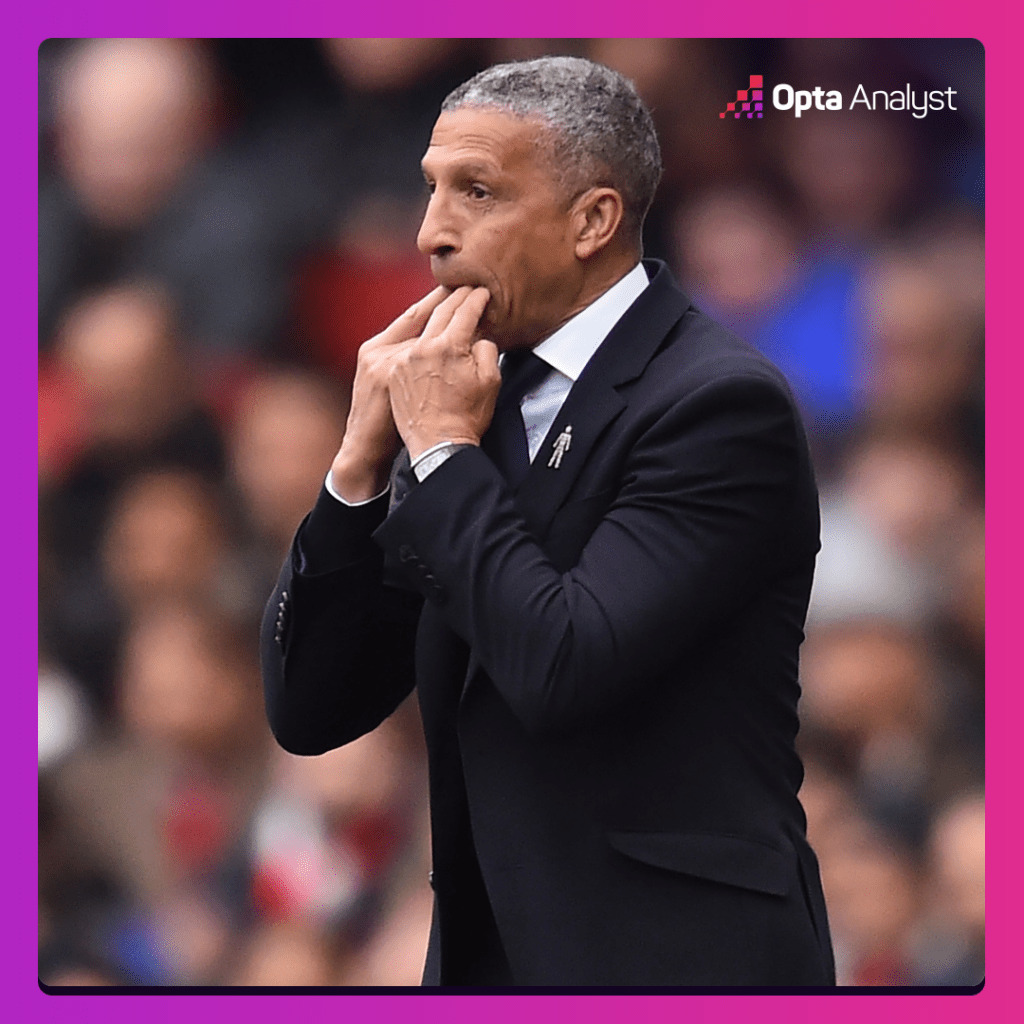
Bedding in new players was tricky and the Seagulls wasted money early on.
Jurgen Locadia, Jose Izquierdo, Alireza Jahanbahksh and Florin Andone all arrived with impressive underlying numbers but struggled to adapt to Hughton’s style of play.
Making the bold decision to hire Potter was a clear message that performances mattered more than results, to an extent. The club decided that the data-led purchases needed a proactive approach on the pitch to really fulfil their potential.
It worked too with Ben White, Cucurella and Bissouma all being sold for big money. They also turned a profit on Trossard and will make an eye-watering profit on Caicedo when they do decide to cash in.
When Potter decided to take the job at Chelsea, many wondered how Brighton would replace him. He was a tactically versatile coach who developed players across multiple positions. He also favoured a back-three formation, a system that very few managers use. Again, most clubs buy players for a particular system and tend to need multiple transfer windows to assemble a squad that can confidently move away from it.
But Brighton aren’t like most clubs. They have been buying players they see value in. This has given them a varied squad and allowed the senior management team a lot of flexibility when identifying a successor. In other words, any new manager didn’t have to use a back three.
Their decision to hire Roberto De Zerbi shouldn’t have come as that much of a surprise. His time at Sassuolo caught the eye and he also did an impressive job with Shakhtar Donetsk prior to departing in the summer.
Paul Barber, the CEO of Brighton, commented on De Zerbi’s time in Serie A following the Italian tactician’s appointment.
We’ve been particularly impressed by what Roberto did with Sassuolo, where he achieved successive top-half finishes with a relatively small club. It’s no secret our chairman is constantly monitoring potential coaches across the world as part of our succession planning, but Roberto was our number-one choice and the only candidate we spoke to. We feel Roberto is the ideal cultural and technical fit for Brighton & Hove Albion, and the right person to continue the club’s progress and work with this outstanding group of players.
Paul Barber
Like Potter, De Zerbi had a specific brand of football and he was loyal to it. He’s used the foundations put in place by his predecessor to actually improve this Brighton team without needing to dip into the transfer market.
The 43-year-old initially kept the back three shape while he familiarised himself with the squad. However, he soon moved to his favoured 4-2-3-1 shape and since the switch, Brighton have been one of the most in-form teams in England, winning eight of their 12 matches and suffering just two losses – against Aston Villa and league leaders Arsenal. De Zerbi’s side have scored 32 goals at a rate of 2.6 per game. That average is even more impressive when you consider the run includes two matches against Arsenal, a match against Chelsea and two against Liverpool.
By making that change, De Zerbi has transformed the way Brighton play.
For example, under Potter this season, the Seagulls averaged just shy of 50% possession. Under the Brescia-born boss, they average 60% and are attempting 150 more passes on a per 90 basis. Furthermore, they are averaging 16.5 10+ pass sequences per 90 compared to the 8.9 they managed under the now Chelsea manager.
Remarkably, De Zerbi has been able to put his stamp on things by making subtle tweaks to how he’s using the players at his disposal.
Alexis Mac Allister is one to have benefited from this.
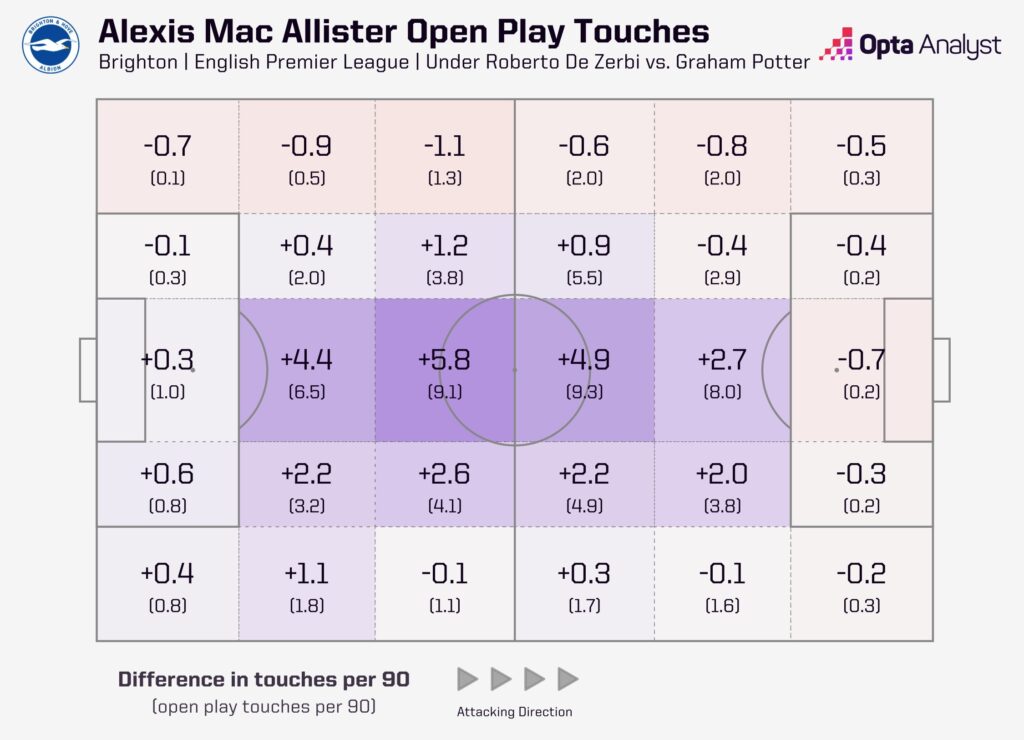
With Brighton dominating the ball, Mac Allister is much more heavily involved. In fact, he leads the way for attacking sequence involvements per 90 with six, up from 3.7 earlier in the campaign.
When Potter was at the helm, a lot of their play was geared towards getting the ball into wide areas for the wing-backs. Once in or around the final third, the likes of Trossard and Solly March would look to funnel the ball inside.
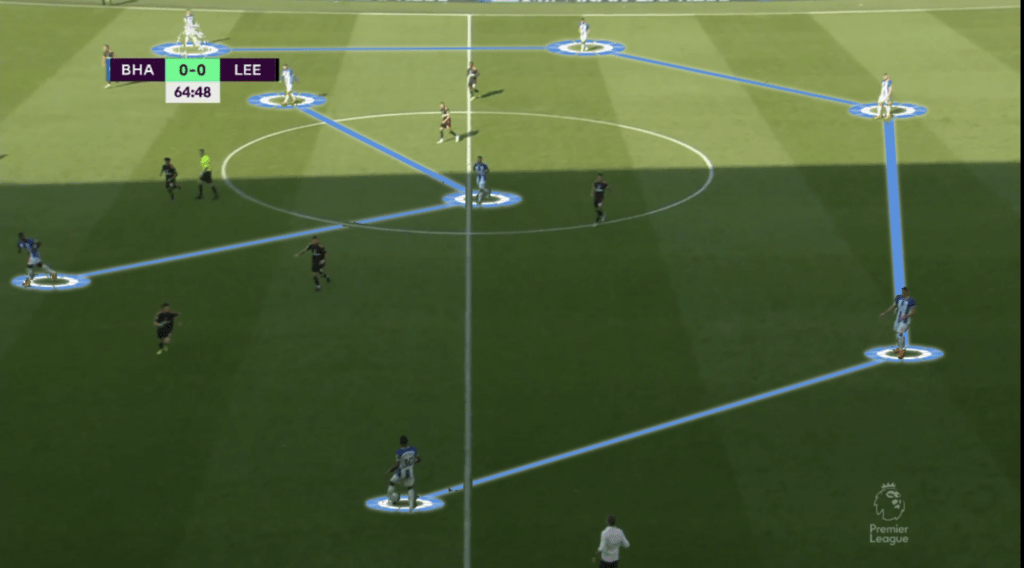
The shape adopted by Brighton in the build-up during Potter’s time with the club earlier this season can be seen above.
The two No8s would push on to support the two central attackers once the ball progressed so they would end up with a shape similar to the image below.
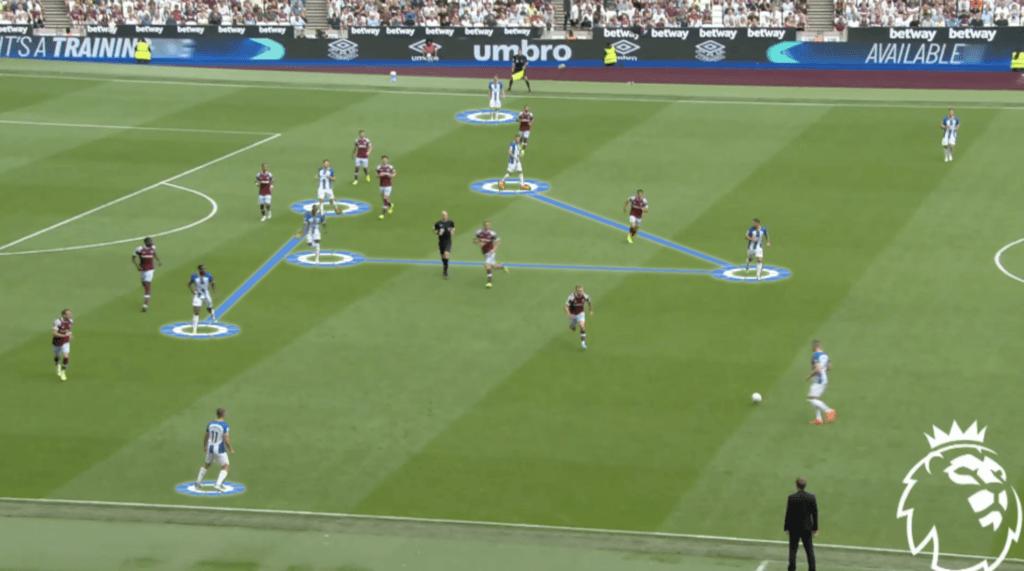
As a result of this, the wing-backs topped the attacking sequence involvements per 90 chart under Potter.
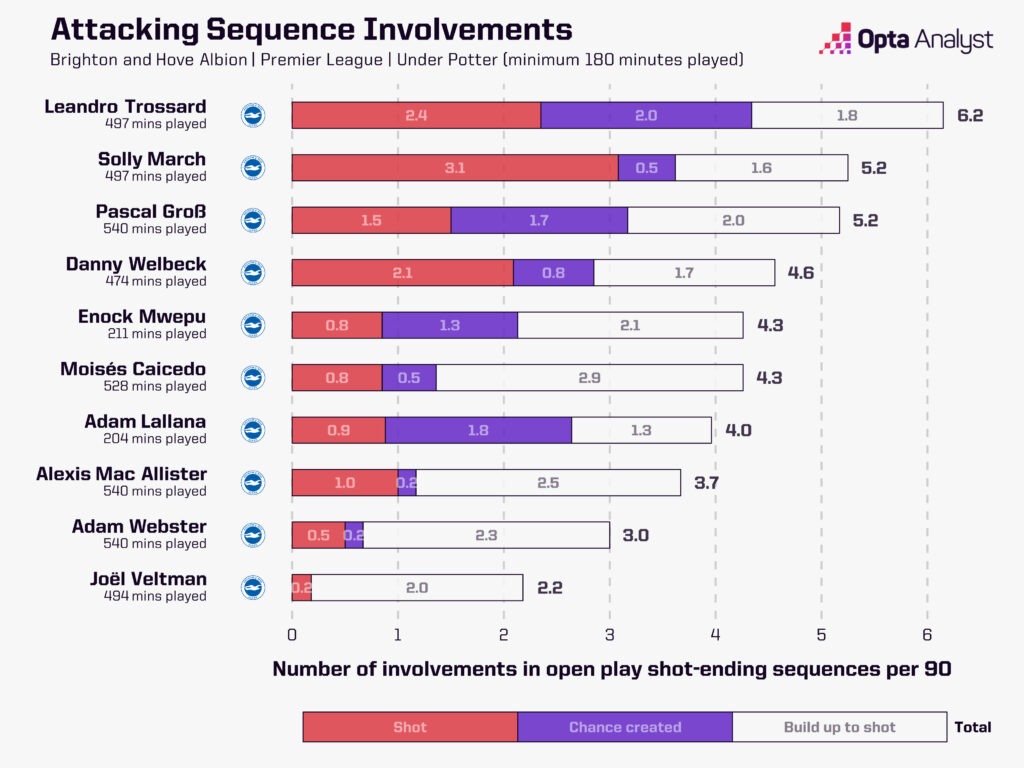
De Zerbi’s decision to switch the system has given the team more goal threats, though.
Brighton now attack with a front four and are backed up by the double pivot made up of box-to-box midfielders. The width comes from the full-backs and they now have their most dangerous players in more central areas.
Simply put, under Potter, the attacking four were usually made up of one natural forward and three midfielders. Under De Zerbi, the four in the attack are attackers. The impact this has had is clear for all to see.
Field tilt measures territorial dominance between teams, looking at the share of possession each team has in their attacking third compared to their opponent. Brighton are third in the league under De Zerbi which is incredible, really.
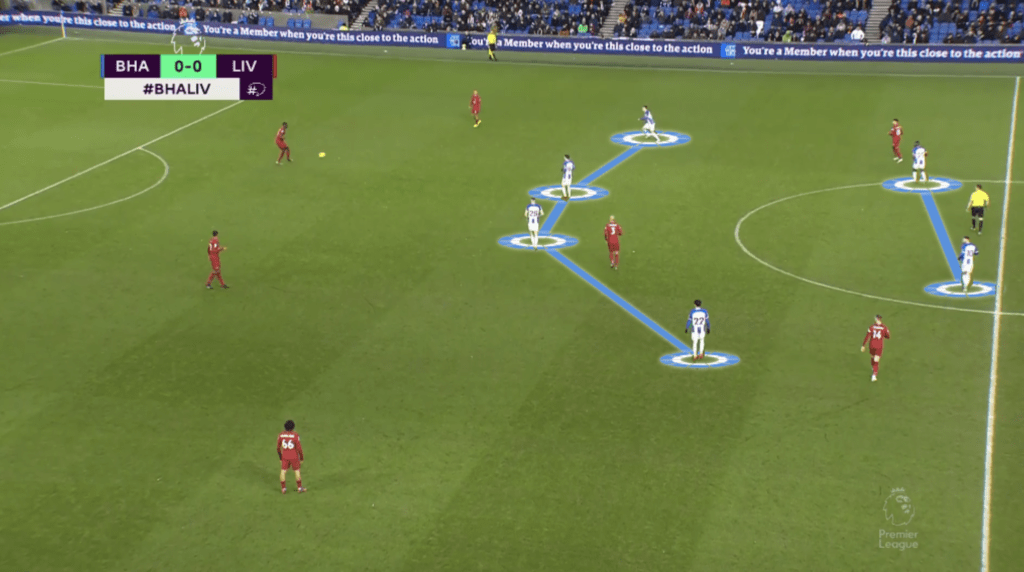
You can see the subtle tweaks in the still above, taken during their 3-0 win over Liverpool.
The front four is made up of Karou Mitoma, Evan Ferguson, Adam Lallana and Solly March. The quartet are backed up by Caicedo and Mac Allister.
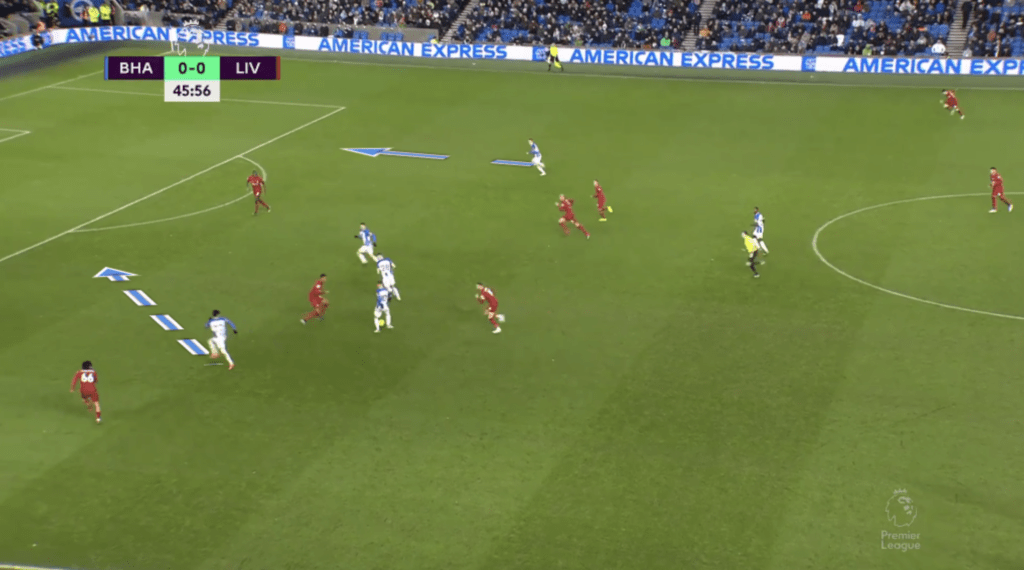
Brighton press the visitors and force them into turning over the ball. As soon as possession is picked up, Mitoma and March attack the penalty area. In the previous system, they would’ve been deployed as wing-backs and not in the position to do this.
This move ends with Mitoma passing to March and Brighton take the lead.
Every single final third player is benefitting from this new shape utilised by De Zerbi. For example, March didn’t score a Premier League goal last season. He has four goals in his last five Premier League appearances as well as two assists. The 28-year-old had an Expected Goals (xG) per 90 average of 0.07 last season. It is currently 0.24 this time around.
Mitoma is another with good underlying numbers for the Seagulls this term, averaging 0.20 xG/90 and an Expected Goals Assisted (xGA) average of 0.31. Even Trossard had a spike in xG, rising to 0.3 from 0.24 prior to his departure. Lallana, a player being used as the second striker in the system, has seen his numbers jump from 0.08 xG/90 and 0.05 xA/90 to 0.11 xG and 0.13 xA.
If Brighton wanted to dominate the ball, which is what De Zerbi usually expects from his teams, they needed to be aggressive in their approach. It was a brave decision but it had to be done and it has paid off.
Another encouraging sign for the Seagulls is that they don’t appear to be solely reliant on individuals either. During Mac Allister’s break following his exploits in Qatar, Pascal Groß slotted in seamlessly alongside Caicedo. The German starred alongside the Argentine in the win over Liverpool last weekend. Lallana has played with Danny Welbeck and Ferguson in attack but in the FA Cup win, the latter two started together.
De Zerbi himself said the team are “ready to go without Caicedo.” That quote alone highlights how bullish he is about the system he has and the trust in his players.
It has been a slow transition for Brighton, but having found an identity under Potter, they now know how to dominate under De Zerbi.
Enjoy this? Subscribe to our newsletter to receive five stories each Friday. It’s free. Also, follow us on Twitter.
